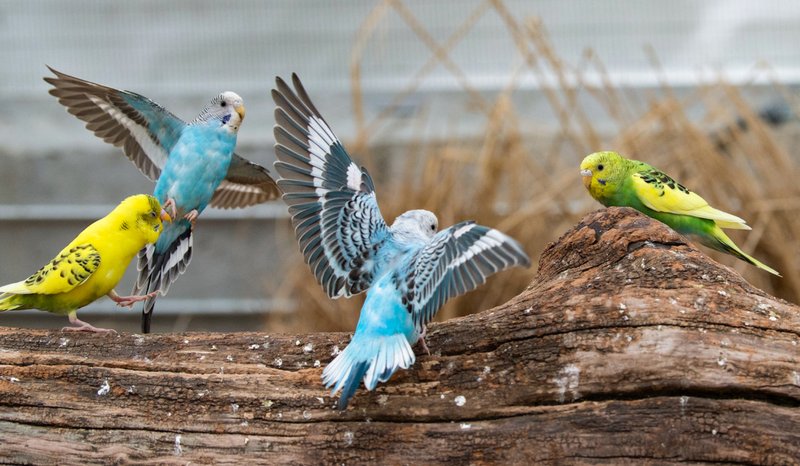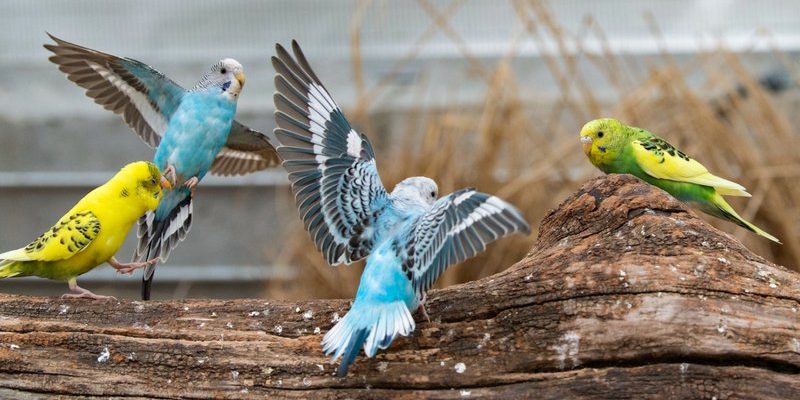
You might be surprised to learn that budgies are originally from Australia, where they roam freely in the wild. These birds are social, intelligent, and incredibly adaptable. When kept as pets, they adjust to life in cages and homes, finding ways to make their world enjoyable and stimulating. So, how do they manage this? Let me explain some of the remarkable ways budgies adapt to their environment both in the wild and at home.
Where Budgies Come From: The Australian Outback
To truly understand how budgies adapt, we need to start with their roots. Native to the Australian outback, budgies thrive in open grasslands, scrublands, and even forests. You can think of Australia as a vast buffet of food and shelter options for these little birds. In the wild, budgies have developed skills to navigate their environment. They flock together to stay safe from predators, and they communicate with each other using a variety of chirps and whistles.
In harsh conditions, like during a drought, they’re quick to find alternative food and water sources. For example, they might travel long distances for miles just to discover a hidden watering hole. This ability to adapt to changing conditions is a testament to their survival instincts. Imagine if you were in a buffet line and the dish you wanted ran out. You’d have to be flexible and try something new, right? That’s exactly what budgies do.
Social Behavior: Flocking and Communication
Budgies are incredibly social creatures, which is a key part of their adaptability. In their natural habitats, they live in large flocks that can consist of hundreds of birds. This social structure not only helps them feel safe from predators, but it also plays a big role in how they find food and water. When one budgie discovers a good food source, it communicates that information to the rest of the flock through calls and signals.
At home, budgies can exhibit similar social behaviors. If you keep a budgie as a pet, you might notice it becoming attached to you or other birds in the house. They thrive on interaction, so providing them with companions, whether it’s another budgie or even a human friend, is essential. Just like how we enjoy sharing our lives with friends and family, budgies flourish in social environments where they can communicate and bond.
Physical Adaptations: Colors and Features
Have you ever admired the vibrant colors of a budgie? Those striking shades of green, blue, and yellow are more than just pretty; they serve important purposes. Their colorful plumage helps them blend into their environments, providing camouflage against predators in the wild. In fact, the patterns and colors of budgies can change based on their habitat, allowing them to adapt visually too!
Moreover, budgies have strong beaks designed for cracking seeds and nuts. This physical trait is crucial because their diet mainly consists of grains and seeds found in their environment. If you think about it, it’s similar to how we have teeth specifically adapted for chewing different types of food. All these features work together to ensure that budgies can thrive no matter where they are.
Environmental Enrichment: Making the Most of Pet Life
For pet budgies, adapting to home life can sometimes be a challenge, but they are quick learners! They need mental stimulation and plenty of activities to keep them happy. Just like you might rearrange your living room for a fresh feel, budgies benefit from a variety of toys, perches, and places to explore in their cages.
You can enhance their environment by:
- Adding swings and ladders for physical exercise
- Providing chewable toys to satisfy their natural instinct to gnaw
- Creating hiding spots for them to feel secure
These additions give budgies a sense of adventure and exploration, helping them adapt to life indoors. Plus, a well-enriched environment reduces boredom and helps prevent behavioral problems, keeping your feathered friend content and engaged.
Diet Adaptations: Adjusting to Available Food
In the wild, budgies have a diverse diet that varies with the seasons. They primarily eat seeds, but they’ll also munch on greens, fruits, and even flowers when they’re available. This dietary flexibility ensures they get all the nutrients they need to stay healthy. Think about it: If you were limited to just one type of food, you’d get bored and possibly miss out on important vitamins!
As pet owners, it’s essential to mimic this variety in their diets. Offer your budgie a mix of seeds, pellets, fresh veggies, and occasional fruits. A healthy, varied diet not only satisfies their hunger, but it also helps them adapt to their new home by giving them the nutrients they need to thrive.
Behavioral Changes: Adapting to New Homes
Bringing a budgie home can be a significant change for both you and the bird. At first, they may feel shy or anxious, which is completely normal. Just like how you might take time to warm up in a new social setting, budgies need time to adjust to their new environment.
To help your budgie adapt, create a calm and welcoming space. Speak softly around them and give them plenty of time to explore their cage. With patience, you’ll likely find that they become more curious and interactive. You might even witness their playful side shining through as they learn to trust you. Each little step they take toward feeling comfortable is a major leap in their adaptability journey!
Budgies are remarkable little birds that have mastered the art of adaptation, whether in the wild or at home. By adjusting their behavior, diet, and social interactions, they can thrive in a variety of environments. Watching how these tiny creatures adapt is like seeing a small miracle unfold.
So, the next time you see a budgie, take a moment to appreciate all the ways it has learned to navigate its world—whether it’s by blending into its surroundings or finding joy in simple toys. Budgies are truly a testament to resilience, teaching us a lesson in adaptability that we can all learn from.

